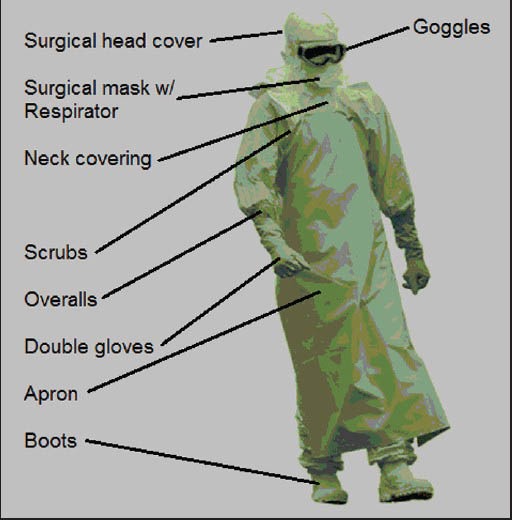Figure 3.

A pictorial representation of the protective equipment used by healthcare personnel in the setting of direct contact with actively symptomatic individuals, their blood, or body fluids. Ebolavirus can be contracted by such contact and is capable of infecting via very small defects in the human skin. Although Ebola cannot be transmitted via airborne droplets, the surgical mask and the respirator assist in completely covering the face and preventing larger fluid droplets from entering the upper respiratory passages. Whole-body coverage also makes it less likely for the healthcare worker to accidentally make contact between gloves or other surfaces directly exposed to the virus and any uncovered skin surfaces. For that reason, it is also important that workers be decontaminated before taking off the protective equipment, and that another person observes the removal of the said equipment, to ensure that none of the exposed external surfaces come in direct contact with the healthcare worker's skin during the process
